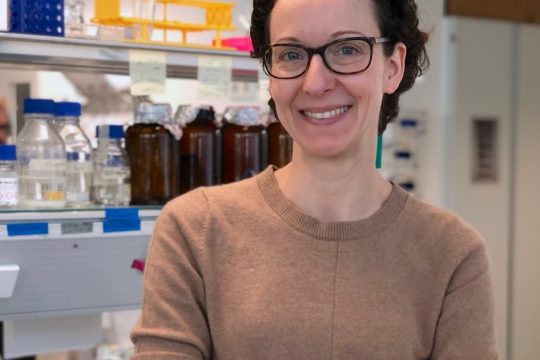Single cell gene molecular profiling has demonstrated that cell classification requires more than a simple collection of markers. Current approaches do not account for the dynamic nature of cell states and inherent variation in cell types. This is especially...
The Peters lab applies a translational medicine approach to study the pathobiology of inflammatory bowel disease (IBD), with the ultimate goal of developing mechanistically novel IBD therapeutics. Our laboratory uses preclinical rodent colitis models and genetically modified mice to...
Using nucleic acid chemistry and biology to create safer cancer drugs and tunable imaging agents for cancer detection. Traditionally antibodies have been considered the gold standard of targeting ligands, able to specifically target desired cellular targets with high affinity....
The evolution of multicellularity occurred hand in hand with the diversification of cell types with disparate morphologies and functions. This segregation of function across different cell types enabled astounding animal complexity; but at the same time, extreme specializations of...
Understanding the brain using evolution, viruses, and barcode sequencing. Our research aims to understand the structure and function of the brain. To do so, we take a comparative approach and develop molecular, viral, and sequencing technologies to measure neuronal...
Redox regulation plays a central role in signal transduction processes operating in the brain. Aberrant redox signaling is a hallmark of several neurodegenerative diseases such as Alzheimer’s disease, Huntington’s disease, Parkinson’s disease, Amyotrophic Lateral Sclerosis and various Ataxias. It...
Research in my laboratory is focused on understanding the molecular mechanisms of multi-subunit assemblies involved in synaptic communication. We are particularly interested in elucidating the structural thermodynamics that govern subunit assembly, ligand binding, and allosteric control of neurotransmitter receptors....
Copper plays an essential role in human physiology. It serves as a cofactor to key metabolic enzymes that are required for respiration, neurotransmitter biosynthesis, detoxification of radicals, blood clotting, connective tissue formation, and many others processes. Through currently unknown...
The goal of my research program is to answer a fundamental biological question: how is the genome properly interpreted to coordinate the diversity of cell types observed during neuronal development? We are focused on the acquisition of specific cellular...










